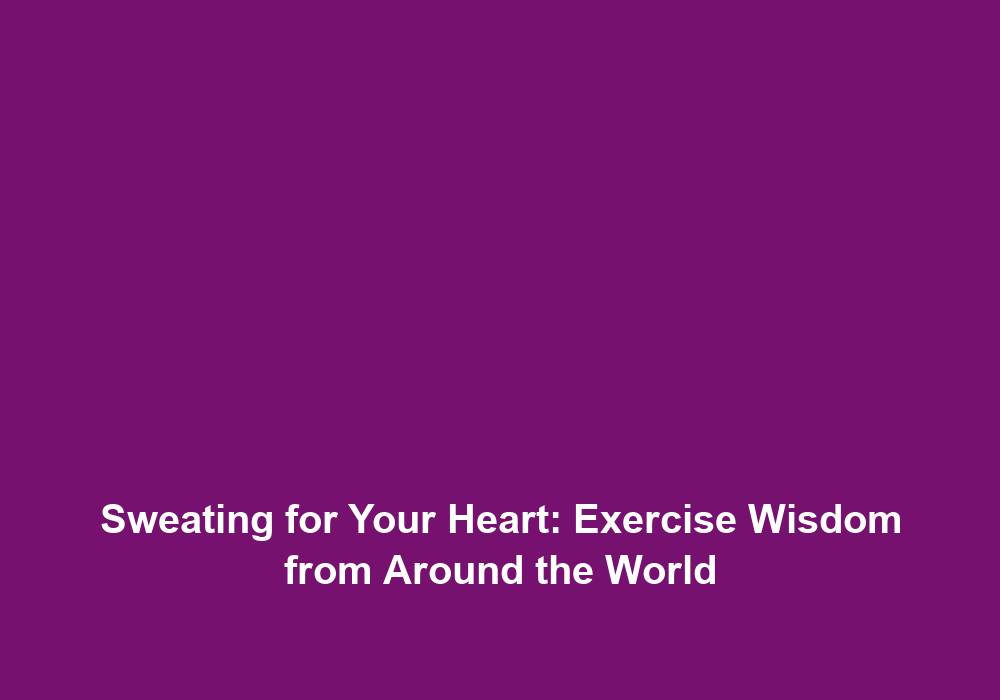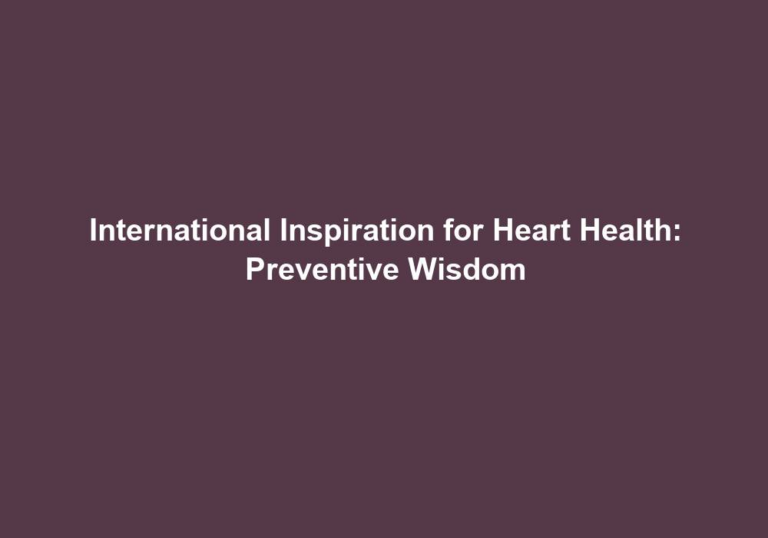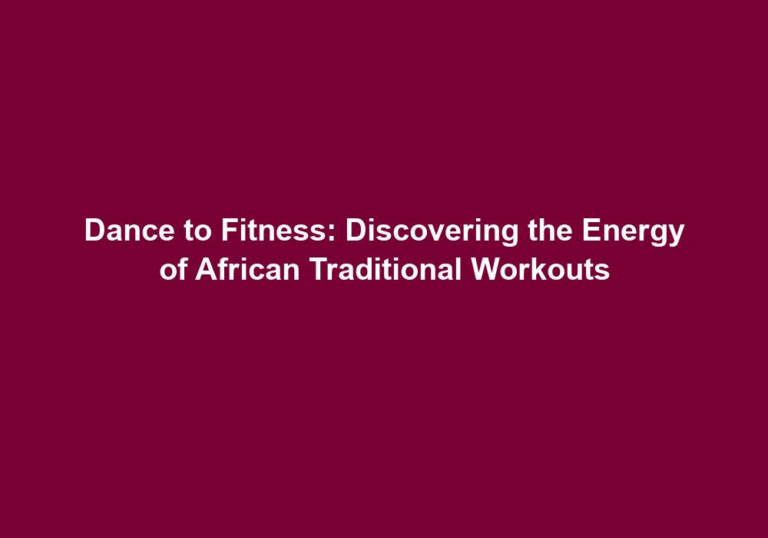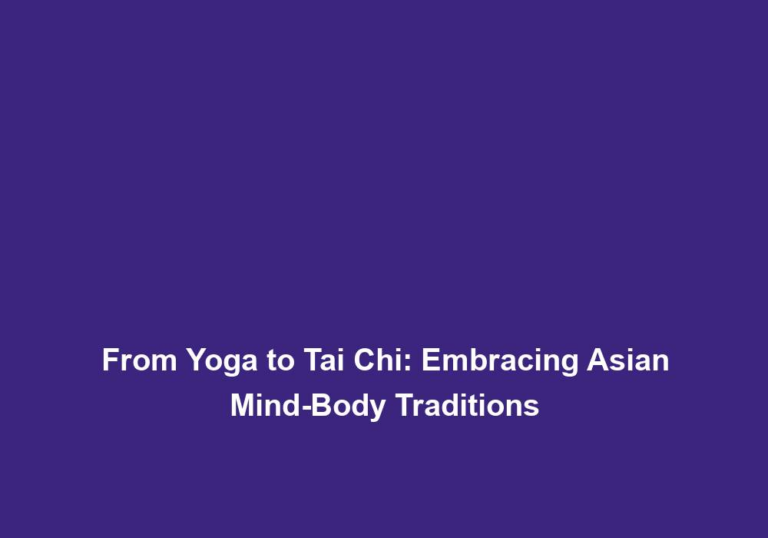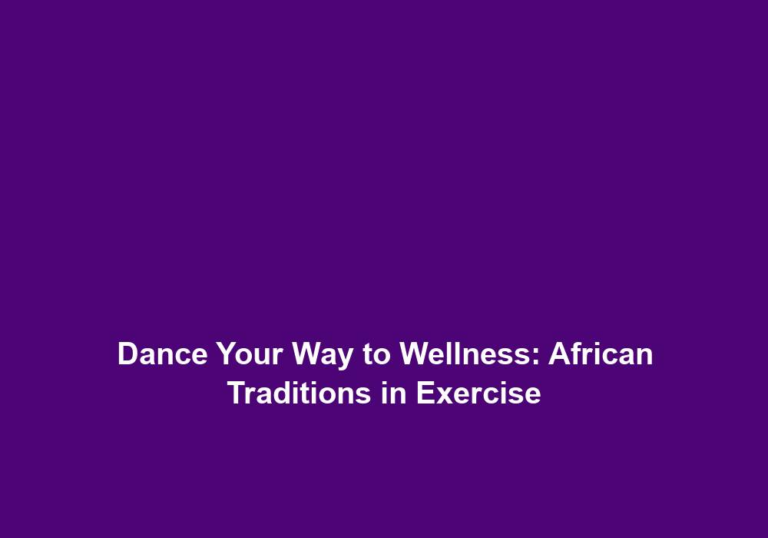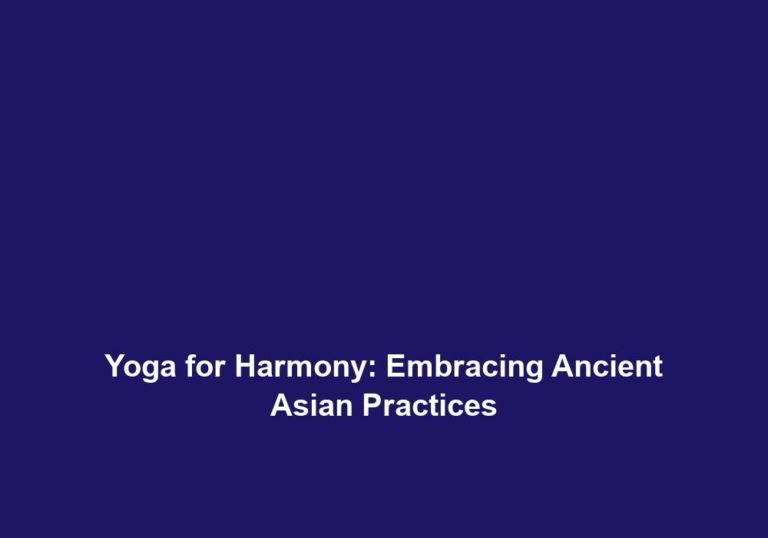Sweating for Your Heart: Exercise Wisdom from Around the World
Regular exercise is essential for maintaining a healthy heart and overall well-being. While the benefits of physical activity are well-known, different cultures and regions across the globe have their unique approaches to exercise. In this article, we will explore exercise wisdom from around the world, highlighting various techniques, traditions, and practices that promote cardiovascular health and fitness.
1. Yoga and Meditation of India
India is renowned for its ancient practices of yoga and meditation, which not only promote physical health but also mental and emotional well-being. Yoga combines physical postures, controlled breathing, and meditation to improve flexibility, balance, and strength. Regular practice of yoga can reduce stress, lower blood pressure, and enhance cardiovascular health. Some popular yoga styles include Hatha, Vinyasa, and Ashtanga.
- Yoga postures, known as asanas, stretch and strengthen the muscles, promoting overall flexibility and range of motion.
- Controlled breathing techniques, such as pranayama, help calm the mind, reduce anxiety, and improve lung capacity.
- Meditation practices allow individuals to cultivate focus, mindfulness, and emotional resilience, leading to improved mental well-being.
2. High-Intensity Interval Training (HIIT) from Australia
Australia has popularized High-Intensity Interval Training (HIIT), a form of exercise that alternates short bursts of intense activity with brief recovery periods. HIIT workouts can be completed in a relatively short amount of time, making them ideal for busy individuals. This type of training increases cardiovascular fitness, promotes fat burning, and improves insulin sensitivity. HIIT exercises often involve activities such as sprinting, jumping jacks, and burpees.
- HIIT workouts challenge the cardiovascular system by rapidly raising and lowering the heart rate, improving its efficiency.
- The intense bursts of activity increase the body’s metabolic rate, leading to greater calorie burn even after the workout.
- HIIT also improves the body’s ability to utilize oxygen, enhancing overall cardiovascular endurance.
3. Tai Chi from China
Tai Chi is an ancient Chinese martial art that combines slow, graceful movements with deep breathing and mental focus. This gentle form of exercise promotes balance, flexibility, and relaxation. Regular practice of Tai Chi can lower blood pressure, improve cardiovascular function, and reduce stress levels. It is particularly beneficial for older adults, as it helps prevent falls and enhances overall mobility.
- The slow, flowing movements of Tai Chi promote joint flexibility, muscle strength, and coordination.
- Deep breathing techniques during Tai Chi exercises increase oxygen intake, improving lung capacity and respiratory function.
- The meditative aspect of Tai Chi calms the mind, reduces mental stress, and enhances overall emotional well-being.
4. Capoeira from Brazil
Originating in Brazil, Capoeira is a martial art that incorporates elements of dance, acrobatics, and music. This unique form of exercise not only improves physical fitness but also encourages self-expression and cultural appreciation. Capoeira enhances cardiovascular endurance, strength, and flexibility. It also fosters social connections and boosts self-confidence through its emphasis on community and cooperation.
- Capoeira movements involve continuous flowing motions that engage multiple muscle groups, improving overall strength and muscle tone.
- The acrobatic elements of Capoeira, such as flips and kicks, enhance agility, coordination, and body control.
- The rhythmic music and group interaction during Capoeira sessions create a sense of community and promote social well-being.
5. Nordic Walking from Scandinavia
Nordic Walking originated in Finland and has become popular across Scandinavia and other parts of Europe. This activity involves walking with specially designed poles that engage the upper body muscles, providing a full-body workout. Nordic Walking increases heart rate, improves oxygen consumption, and strengthens the cardiovascular system. It is a low-impact exercise suitable for people of all ages and fitness levels.
- The use of poles in Nordic Walking engages the muscles of the arms, shoulders, and core, increasing overall calorie burn and muscle activation.
- The increased workload on the upper body during Nordic Walking leads to improved cardiovascular fitness and oxygen uptake.
- The rhythmic walking motion combined with the fresh outdoor environment provides a calming effect, reducing stress and improving mental well-being.
6. Running and Parkour from France
France has made significant contributions to the world of sport and exercise, particularly through running and the urban athletic discipline of parkour. Running is a versatile exercise that can be practiced anywhere, promoting cardiovascular health, stamina, and weight management. Parkour, on the other hand, focuses on moving efficiently through obstacles, developing agility, strength, and spatial awareness.
- Running is a high-impact cardiovascular exercise that strengthens the heart and lungs, improves endurance, and burns calories.
- Parkour training involves dynamic movements that challenge the body’s strength, coordination, and flexibility, promoting overall fitness and body control.
- Both running and parkour provide an opportunity to explore the outdoors, connect with nature, and improve mental well-being through the release of endorphins.
7. Pilates from Germany
Pilates, developed by Joseph Pilates in Germany, is a low-impact exercise method that emphasizes core strength, flexibility, and body awareness. Pilates exercises target the deep muscles of the abdomen and spine, promoting stability and proper alignment. Regular Pilates practice can enhance cardiovascular fitness, improve posture, and prevent injuries. It is suitable for individuals of all fitness levels and can be tailored to specific needs and goals.
- Pilates exercises focus on activating the core muscles, improving overall stability, and supporting the spine’s alignment.
- The slow and controlled movements in Pilates enhance muscle endurance, flexibility, and control, contributing to improved cardiovascular health.
- By emphasizing proper alignment and body awareness, Pilates helps prevent injuries and promotes better posture and body mechanics.
8. Zumba from Latin America
Zumba is a dance fitness program that originated in Colombia and is now enjoyed worldwide. This energetic workout combines Latin and international music with dance moves, creating a fun and engaging exercise experience. Zumba improves cardiovascular endurance, coordination, and mood. It is suitable for people of all ages and fitness levels, offering a great way to burn calories while enjoying vibrant music and dance styles.
- Zumba’s dance routines involve continuous movement and aerobic exercise, increasing heart rate and improving cardiovascular fitness.
- The variety of dance styles in Zumba, such as salsa, merengue, and hip-hop, enhance coordination, balance, and rhythm.
- The upbeat and lively music in Zumba classes creates a positive and motivating atmosphere, boosting mood and mental well-being.
9. Martial Arts from Japan
Japan is renowned for its martial arts disciplines, such as Karate, Judo, and Aikido. These practices combine physical techniques with mental discipline, promoting self-defense skills, strength, and balance. Martial arts training enhances cardiovascular fitness, coordination, and focus. It also cultivates qualities such as respect, self-control, and perseverance, fostering personal growth beyond physical fitness.
- Martial arts training involves a combination of aerobic and anaerobic exercises, improving cardiovascular endurance and muscle strength.
- The precise movements and techniques in martial arts require coordination, balance, and flexibility, enhancing overall motor skills.
- The mental discipline and focus cultivated in martial arts practice contribute to improved concentration, self-awareness, and emotional resilience.
10. Outdoor Activities from New Zealand
New Zealand’s stunning natural landscapes provide the perfect backdrop for a range of outdoor activities that promote cardiovascular health. From hiking and mountain biking to water sports like kayaking and surfing, New Zealand offers countless opportunities for adventure and exercise. Engaging in outdoor activities not only improves cardiovascular fitness but also provides mental and emotional rejuvenation through connection with nature.
- Hiking and mountain biking in New Zealand’s scenic trails challenge the cardiovascular system, improve endurance, and strengthen leg muscles.
- Water sports like kayaking and surfing engage the upper body and core muscles, improving overall strength and coordination.
- Being in nature and experiencing the beauty of New Zealand’s landscapes during outdoor activities reduces stress, boosts mood, and enhances mental well-being.
Embracing exercise practices from around the world can diversify your fitness routine, ensuring well-rounded cardiovascular health and overall physical well-being. Whether you choose to incorporate yoga, HIIT, Tai Chi, Capoeira, Nordic Walking, running, Pilates, Zumba, martial arts, or outdoor activities into your exercise regimen, remember to consult with a healthcare professional before starting any new fitness program. Stay active, stay healthy, and enjoy the benefits of a strong and resilient heart!

